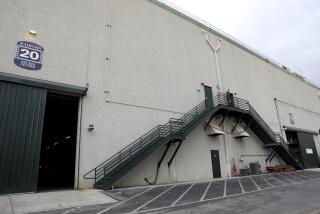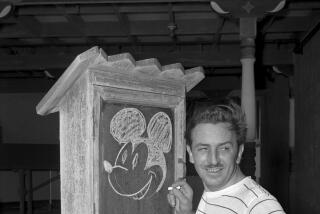What we learned from a tragic Disneyland accident
- Share via
Most journalists have covered certain stories that stuck with them through the years. For me, one of those was Brandon Zucker. Brandon was 4 years old when he tumbled out of a vehicle on the Roger Rabbit ride at Disneyland in 2000. The details are gruesome; it’s enough to say that Brandon’s little body was cramped into a position that didn’t allow him to breathe for several minutes, along with other injuries. He was left severely brain-damaged, unable to speak, walk or interact in meaningful ways.
In an unforgettably touching Times story written by Kimi Yoshino on Brandon’s 5th birthday, his parents told the world for the first time about what their little boy had been like before the injury, a scratchy-voiced little guy who would don kitchen mitts and pretend to be a fighter like Rocky Balboa. His favorite phrase was “I have an idea!” And they talked about their hopes for the future: They refused to settle for the doctors’ gloomy prognosis; they tried anything they could think of, anything that was offered, to bring the “idea” guy back as much as possible.
That never happened. Brandon died in 2009 at the age of 13.
In some ways, Brandon’s injury was a sample of how the old Disneyland handled accidents. There were delays calling for emergency help -- 5 minutes of delay in a case in which time was crucial. The amusement park changed its policies afterward so that employees would call 911 directly instead of going through a central Disneyland office.
But, although this didn’t help Brandon, his terrible injury also signaled a dramatic difference in the way such accidents are investigated. Instead of the amusement park investigating itself and making its own decisions about whether it needed to change anything, state authorities launched an independent probe and concluded that there were several design flaws on the ride. They demanded that those be fixed, and they were.
Things were different because of a law that had been passed the year before, in large part because of another accident at Disneyland in which a tourist was killed while waiting to board a ride. The aftermath of that accident revealed to the public just how unregulated the state’s fixed amusement parks were. No one had the authority to make them safer. Not that top-level amusement parks like Disneyland don’t take their own substantial safety steps. No one would pay Disney prices if it weren’t a generally safe place. But it’s not in any park’s self-interest to admit its shortcomings; sometimes, without an independent inspection, they might not even see those shortcomings.
Does it offer relief to Brandon’s parents to know that the ride is safer now for young children? It’s hard to imagine anything making a dent in that kind of pain. But it does matter, at least, for all the other children and their parents.
The change in California is now so established that it’s hard to accept the lack of such regulations elsewhere. The public might never get to know exactly what caused a 52-year-old woman to fall to her death from a Six Flags roller coaster in Texas. At least one witness said the woman had been concerned that her harness had not “clicked” properly but that she got the “fine fine” treatment from the ride attendant. If that’s true, the public has a right to know. It also has a right to know when the safety harnesses were last checked, and by whom, and how carefully, as well as whether the problem has been fixed -- throughout the park, if necessary.
We can’t prevent all mishaps, of course. Even with stronger oversight, accidents will happen. We could keep our children from going anywhere out of fear for their lives and limbs and bad things could still happen. But there is something particularly jolting about a life-altering or life-ending accident when it involves a long-planned day of family delight. And when it involves a young child.
Perhaps Brandon’s story had personal resonance for me because my youngest child, who had not yet been to Disneyland back in 2000, was just a year younger than he was. In any case, when she was deemed old enough for a day at our iconic backyard fantasy world, no matter how much safer the Roger Rabbit ride was, I could never bring myself to take her on it.
ALSO:
Putting more wind power on the grid
More to Read
A cure for the common opinion
Get thought-provoking perspectives with our weekly newsletter.
You may occasionally receive promotional content from the Los Angeles Times.











